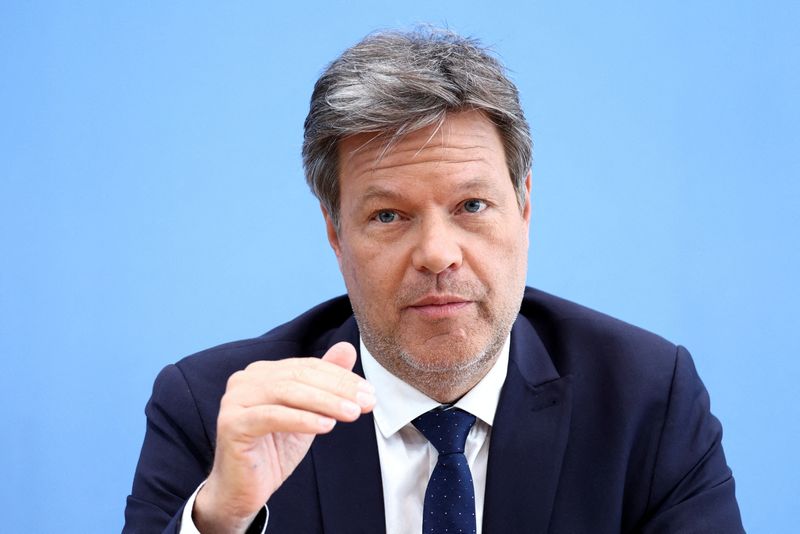Germany sees a like-minded trade ally in South Korea
2024.06.20 00:22
By Maria Martinez
SEOUL (Reuters) – Germany’s economy minister touches down in South Korea on Thursday in the first leg of a trip to Asia, seeking to deepen ties with the region’s fourth-largest economy as Berlin aims to “de-risk” its trade exposure to China.
That is a goal Seoul shares: both export-focused nations are keen to broaden their network of commercial allies amid trade concerns, including China’s increasingly assertive attitude and the growing protectionism of the United States.
“Our goal is to deepen cooperation in the areas of business, economic security and climate, as well as tapping into new potential,” Robert Habeck said of his Korean mission before flying out.
The Seoul leg comes before Habeck flies on to China, with whom Germany did some 250 billion euros ($268.68 billion) worth of trade last year. There he will aim to explain the European Union’s move to impose steep tariffs on Chinese cars that has raised fears of a trade war.
While not on the same scale as Germany’s commercial links with China, South Korean-German ties are well established.
Germany’s direct investment in South Korea amounted to 15.1 billion euros in 2022. According to the last Business Confidence Survey of the Chamber of Commerce, 38% of the German companies in Korea expect sales to increase in the next two years and half of them plan to increase investment in the country.
Trade between both countries was at 34 billion euros ($36 billion) last year. Of that, German exports totalled some 20 billion – making South Korea its third-largest non-EU export destination after China and the United States.
Those exports mainly comprise cars and automotive parts, representing a third of its goods sold to South Korea. Chemical and pharmaceutical products are another important export.
German and Korean companies compete in many sectors, like the automotive sector. At the same time, they collaborate when it comes to research and development in e-mobility or hydrogen.
Specifically, South Korean companies are strong when it comes to semiconductors or batteries, while other inputs within the supply chain of their products come from German firms.
“South Korean) consumers are interested in getting high-end and constantly new products, but also companies here are often ready to pay for the top and latest technology for production or as an element in their products,” said Martin Henkelmann, head of the Korean-German Chamber of Commerce.
BALANCING ACT
German automotive supplier Continental started its operations in South Korea in 1986 and now has seven locations in the country, with a total of 1,300 employees.
While China remains a key market for Continental – which employs 18,000 people and derives no less that 11% of group sales there – South Korea is a major part of its diversification strategy in the region.
“We have a network of production in Asia doing similar products, similar processes,” Martin Kueppers, CEO of Continental Korea, told Reuters. “Then you are not depending on just one location.”
German officials see evidence their South Korean peers have a common interest in developing ties. Seoul is notably working on cutting dependencies on critical products, with a 10-point plan for industrial supply chains unveiled at the end of 2023.
Analyst Katharina Viklenko at Germany Trade & Invest said South Korea’s geographical proximity to China meant it had close trade ties with the world’s second-largest economy.
At the same time, its defence alignment with the United States and the tensions that created with Beijing meant its whole trade policy was a “balancing act”, she said.

($1 = 0.9349 euros)
($1 = 0.9305 euros)








